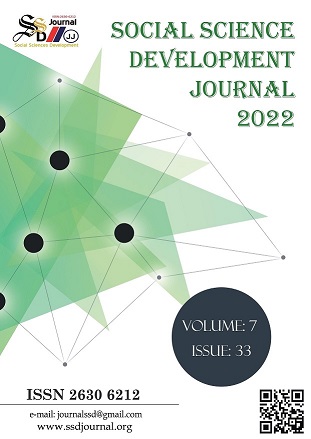THE EFFECTS OF KOREAN POTTERS AFTER THE IMJIN WAR ON JAPANESE CERAMIC CULTURE
DOI:
https://doi.org/10.31567/ssd.734Keywords:
Imjin War, Tea Bowl War, Pottery War, Korean Ceramics, Japanese CeramicsAbstract
The Imjin War was fought between Japan and Korea between 1592 and 1598. The process that
started with Japan's invasion of Korea resulted in the capture of skilled Korean craftsmen and about
800 Korean potters, among them, after the war. Captive Korean potters were settled in areas of
western and southern Japan ruled by the Lords of the time. Korean potters, who have a deep-rooted
ceramic tradition, developed ceramic production techniques in the Japanese regions where they
were placed and became the creators of products such as Satsuma-yaki, Hagi and Karatsu ceramics,
and Arita porcelain, which are known today as Japanese ceramics.As a result of the effects of Korean potters captured as a kind of war booty on Japanese ceramic art
and culture, the Imjin War in the literature of ceramic art history; is called the “Tea Bowl War”,
“The Pottery War” and the “Ceramic War”.
In this study, a brief history of the Imjin War is given, the Korean ceramic tradition and culture,
which reached its peak during the pre-war Joseon Dynasty, is evaluated through examples, and
finally, technical and formal transformations and new formations in post-war Japanese ceramic
production are examined.




